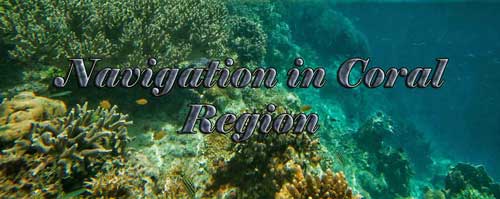Corals are living organisms which they grow live and die. Corals
required sunlight, clear water, warm water temperature, clean water and salty
water for survive. Since corals need sunlight to exist they grow commonly in
shallow water. The depth of sea in coral regions gradually decrease with the
growth of corals. It can be determined as 0.3 meter per year. Corals grow in
areas where water flows. Corals grow windward side of the islands other than
leeward sides of the islands. As a result windward channels can be blocked by
the coral debris and by the inward growth of the corals. The leeward channels
are usually clear because due to the ebb debris deposits in deep water outside
the reef.
Soundings may give little warning of proximity of reef and also the echo sounder trace may be very weak due to the steepness of the gradient. Take into account the survey date. If it is an old survey, proceed with caution. A common feature of coral regions is lack of fixing marks and navigating with the help of eyesight, there for
- Place lookouts aloft and forecastle.
- Coral can best be seen from masthead.
- Above 200 elevations for the sun is best.
In good weather corals can be seen with a height of about 10 – 20 meters. Coral patches with depths less than 6 – 8 meters should be visible at about half a mile. Windward or exposed side of coral reefs are more uniform than leeward side. Windward side may have water breaking over it thus more easily seen. Leeward side frequently have detached coral heads which may not be seen. “Pass on the weather side” because edges and off lying pinnacles will be shown by breaking water.


